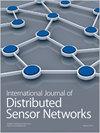一种降低无人机自组网路由发现成本的方法
IF 2.5
4区 计算机科学
Q3 COMPUTER SCIENCE, INFORMATION SYSTEMS
引用次数: 0
摘要
无人机通信网络(UAVCNs)由无人机(uav)组成,以自组织模式连接,以促进5G及以上网络的垂直通信。以自组织模式运行的无人机大多使用响应路由协议在网络中建立路由,以减少节点的能量消耗。本文提出了一种路由发现方法,以减少响应式路由协议在路由发现阶段所面临的开销。在路由算法的目的地发现阶段,响应式路由协议多采用扩展环搜索(ERS)方法。虽然ERS方法的性能优于简单的泛洪,但与传统的ERS方法相比,该方法进一步降低了能量消耗和路由开销。为了完成任务,需要修改生存时间(TTL),以适应搜索尝试中的大量节点。针对不同的应用需求,我们提出了所提出技术的变体,并将其性能与最先进的ERS技术进行了比较。仿真结果表明,该算法在减少路由开销和降低能耗方面优于ERS方法。本文章由计算机程序翻译,如有差异,请以英文原文为准。
A Method to Reduce Route Discovery Cost of UAV Ad Hoc Network
The unmanned aerial vehicle communication networks (UAVCNs) are composed of unmanned aerial vehicles (UAVs) connected in ad hoc mode to facilitate vertical communication in 5G and beyond networks. UAVs operating in an ad hoc mode of operation mostly use reactive routing protocols to establish routes in the network to reduce the energy consumption of the nodes. In this article, a route discovery method is presented to reduce the overhead faced by reactive routing protocols during the route discovery phase. The expanding ring search (ERS) method is mostly used by reactive routing protocols in the destination discovery phase of the routing algorithm. Although the performance of the ERS method is better than simple flooding, the presented method further reduces energy consumption and routing overhead as compared to the conventional ERS method. To achieve the task, the time to live (TTL) is modified to accommodate a large number of nodes in a search attempt. We proposed variants of the proposed techniques for diverse application requirements and compared the performance with the state-of-the-art ERS technique. It has been demonstrated with the help of simulations that the presented algorithm outperforms the ERS method in terms of reduced routing overhead and reduced energy consumption.
求助全文
通过发布文献求助,成功后即可免费获取论文全文。
去求助
来源期刊
CiteScore
6.50
自引率
4.30%
发文量
94
审稿时长
3.6 months
期刊介绍:
International Journal of Distributed Sensor Networks (IJDSN) is a JCR ranked, peer-reviewed, open access journal that focuses on applied research and applications of sensor networks. The goal of this journal is to provide a forum for the publication of important research contributions in developing high performance computing solutions to problems arising from the complexities of these sensor network systems. Articles highlight advances in uses of sensor network systems for solving computational tasks in manufacturing, engineering and environmental systems.

 求助内容:
求助内容: 应助结果提醒方式:
应助结果提醒方式:


